Indoor Activities
Cultivating Digital Creativity and Innovation Skills
Discover how we can enhance your abilities in Cultivating Digital Creativity and Innovation for superior problem-solving and ideation.

In our fast-paced digital world, a whopping 65% of new primary school students will land in jobs that aren’t even here yet. This mind-blowing fact shows how **vital** it is to teach the younger generation digital creativity and innovation. Picture Dr. Seuss: creativity isn’t just some rare talent; it’s a skill to nurture and grow. This prepares them for a future packed with unexpected twists and brand-new opportunities.
Recognizing the transformative role of preschool educators in shaping fertile minds, we are committed to developing environments conducive to creative problem-solving and ideation enhancement. By integrating a spectrum of activities that inspire curiosity and the expression of unique ideas, we lay a robust foundation for perpetual learning. These early interventions pave the way for children to represent what they know in ways that are both significant and impactful, aligning with the esteemed insights of Loris Malaguzzi’s protégé, Gandini (1992).
Key Takeaways
- Understanding the significance of digital creativity and innovation skills for future job markets.
- Recognizing the role of educators in cultivating these competencies from an early age.
- Developing curricula that focus on exploration, problem-solving, and ideation.
- Appreciating creative problem-solving as a dynamic learning objective.
- Emphasizing the importance of experiential learning in fostering innovative thought.
The Importance of Fostering Creativity in a Digital Age
In an era marked by rapid technological advancements, the digital creativity importance cannot be overstated. As we navigate through the complexities of the digital age, integrating creativity into our professional domains becomes imperative. This shift challenges us to rethink how creativity is cultivated and its role in driving innovation forward.
The Shift from Traditional to Digital Creative Practices
Traditionally, creativity involved direct, hands-on processes, often without the aid of technology. Today, digital age creativity amalgamates classical creative practices with digital tools, fostering new ways of expression and ideation. This fusion is not just about using new tools, but also about thinking and creating differently in response to digital stimuli.
Why Creativity is a Key Competence in Modern Workplaces
Creativity ranks highly among the future skills essential for success in contemporary work environments, as per insights from leading global platforms. In modern workplaces, creativity fuels problem-solving and innovation, traits that are invaluable in a corporate landscape dominated by flux and rapid evolution. The presence of creativity in modern workplaces is linked closely with an organization’s agility and its ability to adapt to new challenges effectively.
Insights from World Economic Forum on Creativity as a Future Skill
The World Economic Forum extensively discusses the World Economic Forum creativity insights, highlighting the escalating demand for creative skills as robots and automated systems take over more routine or mechanical tasks. Competencies that cannot be replicated by machines—like creative problem-solving and innovative thinking—are earmarked as the skills of the future.
The growing emphasis on creativity is not just about nurturing artists or designers but is integral to developing leaders who can imagine and execute solutions for tomorrow’s challenges. As such, educational and professional development programs are rapidly recalibrating to include extensive creative learning modules, thereby underscoring the digital creativity importance.
| Creative Skill | Traditional Importance | Importance in the Digital Age |
|---|---|---|
| Innovative Problem-Solving | High | Critical |
| Adaptability | Medium | Very High |
| Collaborative Abilities | Important | Essential |
| Technological Literacy | Low | High |
Thus, as we steer through the dynamic landscapes of the 21st century, embedding digital age creativity into the fabric of our educational and professional systems is not just beneficial but essential. It prepares current and future generations for a world where creativity intersects with technology to spark innovation and drive progress.
Cultivating Digital Creativity and Innovation
In today’s rapidly evolving digital landscape, the importance of cultivating digital creativity is becoming increasingly evident. By integrating traditional creative skills with the transformative capabilities of digital tools, we are not only enhancing ideation but also refining innovation processes that are pivotal in today’s industries. The engagement in this dynamic field is not just about generating ideas but also about transforming these ideas into tangible outcomes that drive progress and foster digital innovation.
At the heart of fostering digital innovation lies the ability to synthesize disparate pieces of information and coalesce them into something novel and impactful. This amalgamation of data, knowledge, and creativity ushers in a new era of solution-oriented thinking critical for resolving complex challenges in various sectors.

Employing feedback mechanisms and continuous refinement processes are other integral aspects of the innovation processes. Through iterative cycles of creation, feedback, and revision, ideas crystallize into improved versions, thus enhancing their relevance and applicability. These cycles not only accelerate the process of innovation but also embed a deeper level of digital creativity into products and solutions that shape our world.
| Phase | Process | Outcome |
|---|---|---|
| Idea Generation | Brainstorming with digital tools | Rich ideation pool |
| Feedback Incorporation | Community reviews and expert advice | Enhanced solution designs |
| Refinement | Iterative design modifications | Market-ready solutions |
Moreover, our reliance on digital platforms emphasizes the transformative potential of digital tools in cultivating digital creativity. Utilizing these platforms responsibly and effectively ensures that our creative processes are not only innovative but also attuned to the demands of the digital era.
The harmonization of innate creativity with digital tools does not solely prepare us for current challenges but also equips us with the prowess to foresee and tackle future complexities. In this way, processes that foster digital innovation are not just about maintaining relevance but about reshaping the future of industries across the globe.
Understanding Digital Creativity and Its Components
In an era where digital tools constantly redefine how we think and create, understanding the dynamics of digital creativity has become crucial. This journey into the digital creativity definition highlights how technology interplays with traditional creative approaches.
Defining Digital Creativity: A Blend of Old Skills and New Technologies
The essence of digital creativity lies in harnessing old skills new technologies. It’s about taking the foundational creative skills — think of sketching, writing, and storytelling — and elevating them with digital tools like graphic design software, digital audio workstations, and content management systems. This blend not only revolutionizes traditional arts but also opens up a myriad of new possibilities for expression and innovation.
Breaking Conventional Barriers with Technology
Breaking barriers with technology is an inherent part of digital creativity. It allows creators to transcend traditional limitations, be it in reach, format, or complexity. For instance, digital platforms enable artists to disseminate work globally with just a click, far beyond the confines of local galleries or networks.
Key Actions Underpinning Digital Creativity
The key actions in digital creativity include a series of interconnected steps that enhance creative output. From brainstorming in digital mind mapping tools to prototyping with 3D printing technology, each step involves a deep integration of technology in the creative process.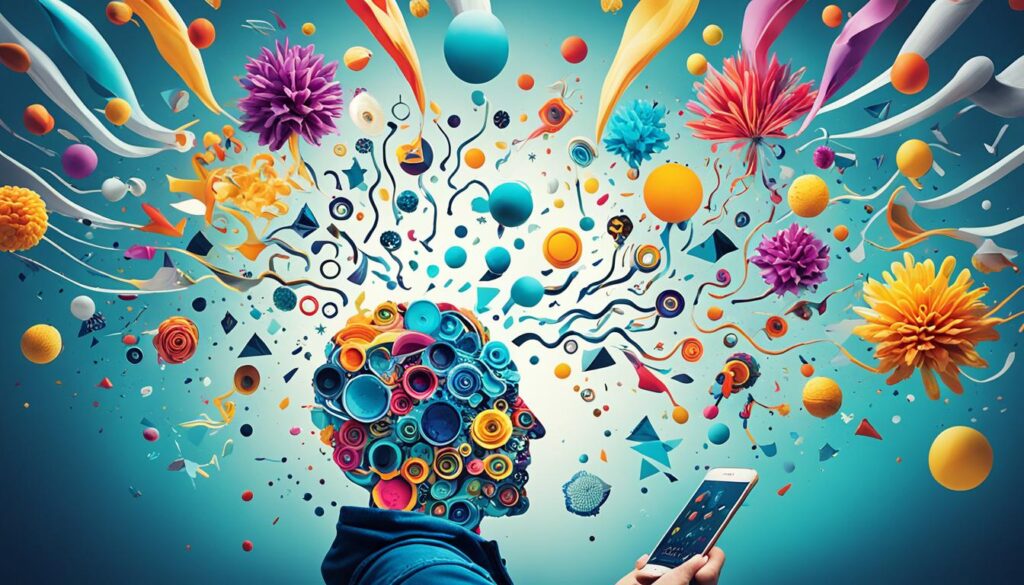
Below is an outline of these crucial actions, illustrating their role and impact:
| Action | Description | Impact |
|---|---|---|
| Remixing | Combining or editing existing works to create something new. | Fosters innovation through hybridization. |
| Revising | Iterative refinement of work to enhance quality and effectiveness. | Improves accuracy and depth of the creative work. |
| Composing | Creating original content using digital tools. | Expands expressive capabilities and engages diverse audiences. |
| Designing | Planning and executing aesthetic and functional elements of a project. | Enhances visual appeal and user interaction. |
Through the integration of these key actions in digital creativity, we witness a transformation not only in the creation process but also in the accessibility and reach of creative works. This transformation is crucial not only for individual creators but also for the broader creative industry, constantly pushing the boundaries of what can be achieved.
Nurturing Creativity Through Experiences and Activities
In our journey to foster holistic learning and development, the creation of supportive and dynamic creative exploration environments plays a critical role. This is grounded in an educational philosophy where every child is viewed not just as a learner, but as a creator, capable of shaping their own understanding through hands-on experiences and imaginative play.
Creating Environments That Encourage Creative Exploration
We believe in setting up creative exploration environments that invite children to think, explore, and create in a space that encourages curiosity and bold experimentation. Through thoughtfully designed spaces that incorporate elements like varied lighting, accessible resources, and flexible seating, we provide children the canvas they need to paint their paths of discovery.
Stimulating Creativity with Diverse Materials and Challenges
To truly nurture creativity, it’s essential to equip our environments with diverse materials for creativity. From tactile resources like clay and fabric to more unconventional items like digital tablets, each material offers a unique gateway to different modes of thinking and problem-solving. These materials not only serve as tools but also ignite the spark of curiosity that leads to deeper engagement and learning.
Applying Scaffolding Techniques to Support the Creative Process
The scaffolding creative process in educational settings involves breaking down tasks into smaller, achievable steps, providing guidance at each stage. This responsive approach aids children in moving from what they already know to what they can potentially understand with support, thereby fostering confidence and competence in their creative endeavors.
We also emphasize the importance of reflection within the creative process, encouraging children to think about what they have created, why they chose to create it in that way, and how they might go about such tasks differently in the future. This cycle of creation and reflection underlines the essential learning outcomes that drive our educational philosophy.
By integrating these principles and practices in our educational approach, we ensure that each child’s journey in creativity is as fulfilling as it is enriching. It is through these guided yet open-ended experiences that children learn to see the world not just as it is, but as it could be, fostering a life-long passion for learning and innovation.
Innovative Teaching Methods for Digital Expression
In the pursuit of enhancing educational outcomes, we focus greatly on the integration of innovative teaching methods that combine traditional pedagogical strategies with advanced educational technology. This hybrid approach not only enriches the curriculum but also prepares students for the complexities of the modern digital landscape.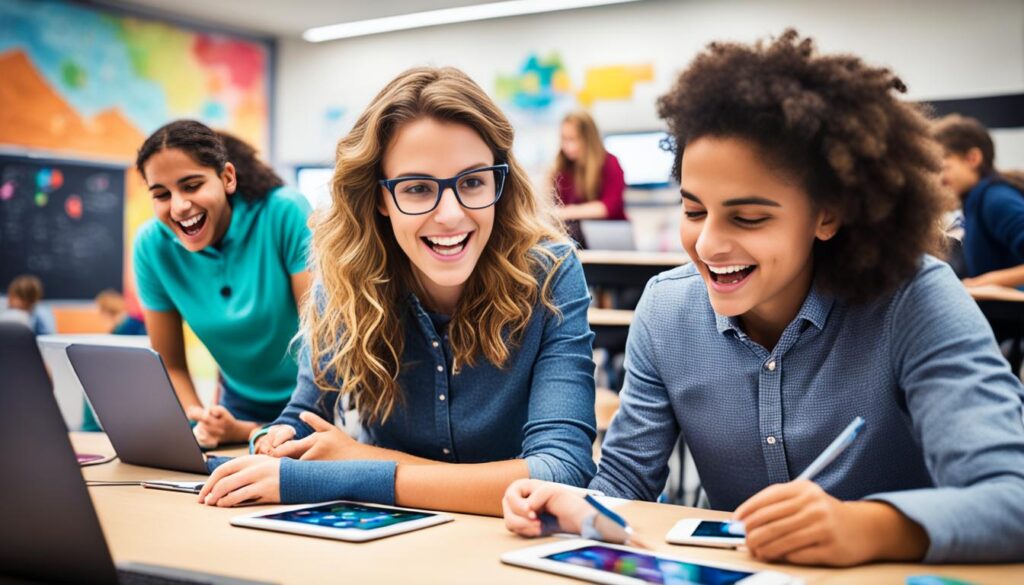
Emphasizing digital expression, educators like Antonella DiGiulio, Ph.D., advocate for the use of digital storytelling, coding, and game design. These tools are not merely academic exercises; they are vital components that enhance literacy, develop narrative skills, and foster logical thinking. By engaging students in these activities, we are equipping them with the skills necessary for future challenges and opportunities.
- Digital storytelling empowers students to create and share their narratives, enhancing their understanding of language and sequence.
- Coding teaches problem-solving and logical thinking, essential skills in today’s technology-driven world.
- Game design integrates creativity with technology, encouraging students to apply their learning in interactive formats.
Moreover, the inclusion of digital art and multimedia projects allows students to showcase their ingenuity while developing technical proficiencies. This form of expression not only captivates their interest but also deepens their understanding of how various elements of technology can be harmonized to create engaging content. Our commitment is to nurture these competencies, ensuring our students are well-prepared for the digital fluency that their future undoubtedly demands.
Adapting Learning to Foster Creativity and Innovation
In our ongoing commitment to the educational evolution, we have embraced the necessary shift towards incorporating both digital tools in education and strategic learning adaptation creativity, ensuring our curriculum aligns with the dynamic landscape of modern educational demands.
The Evolution of Educational Curricula for Creative Competencies
By reevaluating and enhancing our educational curriculum, we prioritize educational curriculum evolution to not just meet, but exceed the emerging needs for creative competencies. This strategic upgrade integrates a balanced blend of traditional teachings with innovative practices, tailored to nurture students’ inventive talents and critical thinking skills.
Incorporating Digital Tools and Methods in the Classroom
Adapting to technology-enhanced creativity, we embed a variety of digital tools in our teaching methodologies. From interactive software to collaborative platforms, these tools are selected to complement and enhance the learning experience, offering students hands-on opportunities to apply their learning in creative and technologically adept ways.
Leveraging Technology for Enhanced Creative Outcomes
The goal of integrating advanced technology in our curricula is to develop a sophisticated environment where technology-enhanced creativity can thrive. We are setting a precedent for how digital resources can be the backbone of creating, ideating, and innovating within academic realms.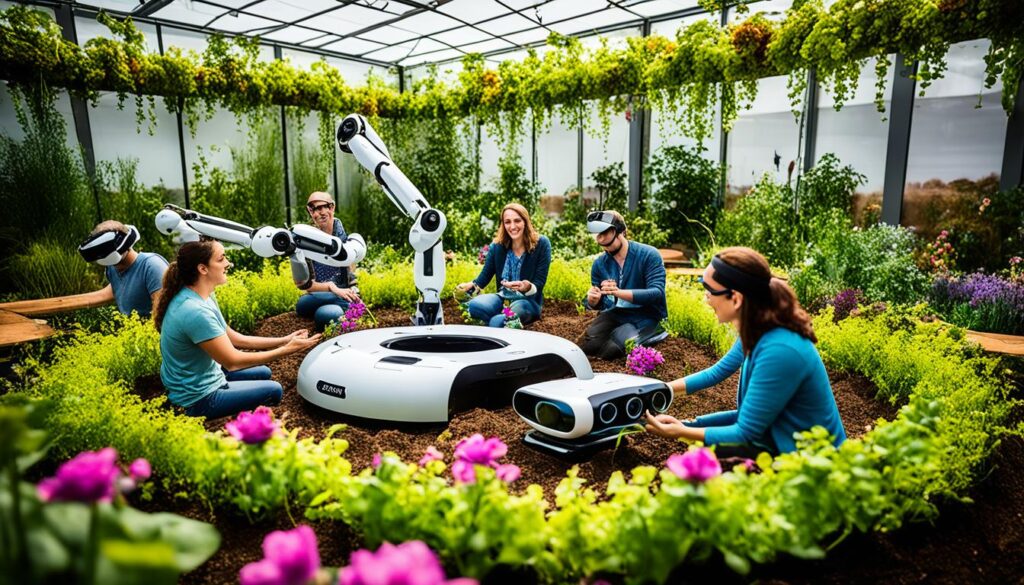
| Tool | Description | Impact on Creativity |
|---|---|---|
| Interactive Whiteboards | Enables dynamic visual learning and access to digital content | Enhances collaborative learning and brainstorming sessions |
| Simulation Software | Provides real-life scenarios for problem-solving | Improves critical thinking and scenario-based learning adaptation creativity |
| Cloud Computing | Facilitates accessibility to course work and resources from any device | Supports continuous learning and group projects |
Building a Foundation for Creativity in Early Education
Establishing a creativity foundation in early education is crucial for fostering lifelong learning and expressive capabilities in young learners. We focus on cultivating environments where children can explore, play, and experiment freely, which are vital for creativity development. This approach not only nurtures inherent creativity but also prepares children for future educational challenges and opportunities.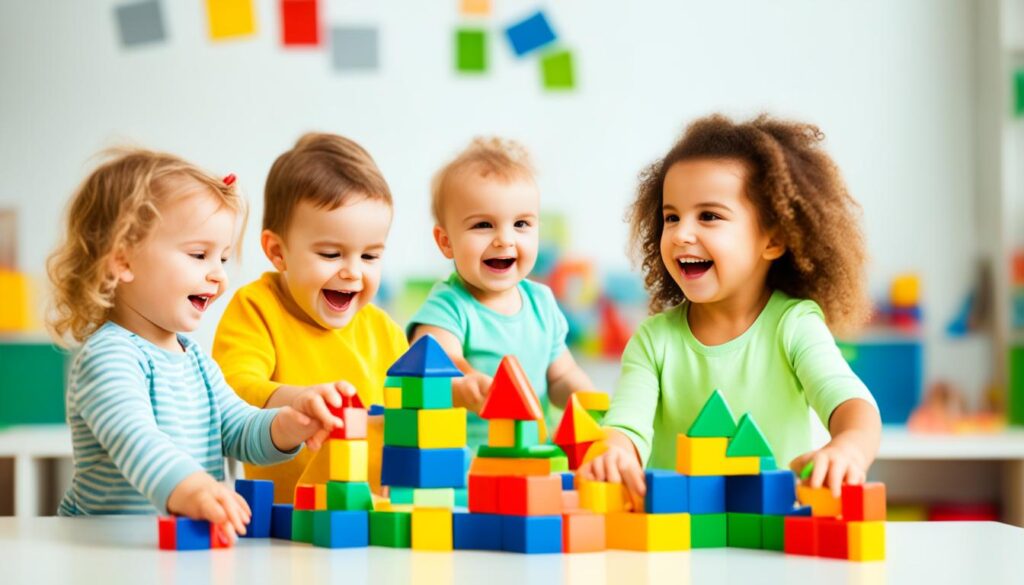
Our educational framework emphasizes process-driven activities, contrasting sharply with traditional product-oriented methods, which can inadvertently suppress individualism and imaginative thinking. By engaging in open-ended exploration, children develop the resilience and confidence necessary to own their creative journeys.
For educators, balancing structured skill-building with the freedom for personal expression is key. We implement this by intertwining guided activities with ample opportunities for self-directed play, bridging structured learning with spontaneous creativity.
| Activity Type | Focus | Benefits |
|---|---|---|
| Structured Play | Skill Development | Enhances problem-solving and teamwork abilities |
| Open-ended Play | Creative Expression | Encourages unique individual expression and cognitive flexibility |
| Guided Exploration | Knowledge Application | Applies learned skills in new scenarios, promoting adaptability |
In our curriculum, we creatively integrate these elements to ensure a comprehensive creativity development in early education, setting the stage for children to succeed and innovate in their future academic and personal endeavors.
Strategies for Promoting Problem-Solving and Creative Thinking
In today’s rapidly evolving educational landscape, fostering skills that enhance problem-solving capabilities and nurture creative thinking is essential. Our focus revolves around strategic methodologies that incorporate promoting problem-solving, arts appreciation, and leveraging children’s interests to enhance their learning experiences.
Integrating Open-ended Questioning Techniques
By embracing open-ended questioning, we catalyze critical thinking and embolden students to explore various possibilities. This form of questioning not only promotes problem-solving but also encourages students to think independently and express their thoughts confidently. The technique enables learners to dive deeper into subjects, making their educational journey both enriching and personally relevant.
Fostering an Appreciation of the Arts and Science
Arts appreciation is pivotal in cultivating a well-rounded education. By introducing students to diverse artistic and scientific experiences, we expand their cognitive horizons and enhance their creative thinking strategies. These exposures help in building connections between different knowledge domains, fostering a robust framework for innovative thinking.
Using Children’s Interests to Fuel Creativity and Discovery
Children are naturally curious, and tailoring learning experiences to align with their interests not only boosts engagement but also significantly enhances creativity. This approach not only makes learning enjoyable but also ensures it is impactful, fostering a lifelong love for discovery and creative exploration.
| Creative Strategy | Benefits | Implementation in Curriculum |
|---|---|---|
| Open-ended Questions | Enhances critical thinking, encourages comprehensive exploration | Incorporate in science and literature discussions |
| Arts Appreciation | Broadens perspectives, enhances sensory experiences | Regular visits to museums, integration of art history in classes |
| Interest-based Learning | Increases engagement, personalizes learning | Surveys to understand student interests, project-based assignments |
Enhancing Creativity with Digital Tools and Platforms
In the digital age, our capacity to enhance creativity through innovative tools is unparalleled. Digital storytelling, coding, multimedia applications, and immersive technologies like virtual reality significantly propel our creative boundaries.
Exploring the Role of Digital Storytelling and Multimedia
By integrating digital storytelling and multimedia creative applications into learning, we can form a bridge between classical narrative techniques and modern digital expressions. This blend not only enriches the storytelling experience but also sharpens critical thinking and improves digital literacy. Multimedia tools bring stories to life, captivating with interactive elements that resonate with diverse learning styles.
Coding and Game Design as Pathways to Creativity
Coding in education acts not just as a skill but as a language of innovation and logic. Through coding, students create, innovate, and solve problems by understanding the core structure of the digital world. Game design complements this by offering a playground for imagination and strategic thinking, fostering both the artist and analyst within learners.
Utilizing Virtual Reality and Augmented Reality in Education
The application of virtual reality in learning opens doors to environments and experiences beyond the physical classroom. From historical recreations to simulated ecosystems, VR provides an immersive platform for deep, experiential learning. Augmented reality further enhances this by overlaying digital information onto the real world, transforming the way educational content is interacted with and perceived.
| Tool | Creative Impact | Applications |
|---|---|---|
| Digital Storytelling | Enhances narrative and communication skills | Educational podcasts, interactive storybooks |
| Coding and Game Design | Develops logical thinking and creativity | Programming courses, simulation games |
| Virtual Reality (VR) | Provides immersive learning experiences | Virtual field trips, 3D modeling |

We are consistently discovering that the integration of enhancing creativity digital tools transforms conventional educational paradigms into dynamic and interactive journeys. By adopting these innovative approaches, we prepare learners to thrive in a rapidly evolving digital landscape.
Conclusion
In summarizing digital creativity and the expansive opportunities it provides, we acknowledge a transformative educational approach that grows increasingly vital in modern curricula. Embracing digital capabilities is not solely about integrating new tools; it’s about fostering a mindset that is open to continuous innovation and adaptation. By teaching our students to visualize solutions where others see obstacles, we nurture forward-thinking innovation that will serve them well beyond the classroom.
Our role in cultivating these skills is intricately tied to how proactively we adopt and exploit the digital resources at our disposal. As educators and thought leaders, we aim to guide the next generation not just in navigating but in shaping the digital landscape. We do so by steadfastly committing to embracing digital capabilities that permeate every aspect of learning and professional growth.
In merging the time-honored tenets of creativity with the interactive and dynamic nature of digital media, we prime our students for a future teeming with uncharted potential. If we want our learners to emerge as leaders and innovators in their respective fields, we must prioritize the fusion of traditional creative insights with the infinite possibilities of digital expression. Therefore, let us continue to incorporate these paradigms of digital creativity into the fabric of our educational ethos, paving the way for a future rich in inventive excellence and technological prowess.FAQ
What are digital creativity skills?
Why is fostering digital creativity important in contemporary workplaces?
How has the World Economic Forum highlighted the significance of creativity for future skills?
What is needed to cultivate digital creativity and innovation effectively?
What defines digital creativity and how does it differ from traditional creativity?
What role do diverse materials and scaffolding play in nurturing creativity?
How are digital tools and methods being incorporated into today’s classroom instruction?
What strategies can be used to promote problem-solving and creative thinking in early education?
How can virtual reality (VR) and augmented reality (AR) enhance creativity in educational settings?

-

 Parenting Styles1 week ago
Parenting Styles1 week agoWorst Parenting Style: Impact on Child Development
-
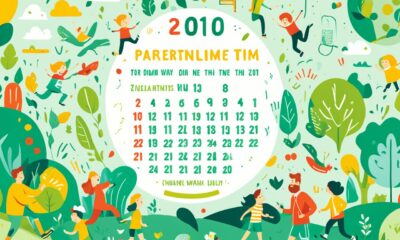
 Parenting Styles1 week ago
Parenting Styles1 week ago2023 Indiana Parenting Time Guidelines Update
-

 Vetted7 days ago
Vetted7 days ago15 Best Books on Step Parenting Every Blended Family Needs to Read
-
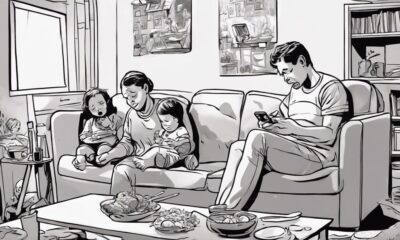
 Parenting Tips6 days ago
Parenting Tips6 days agoUnequal Responsibilities: When One Parent Does All the Parenting
-

 Parenting Tips1 week ago
Parenting Tips1 week agoFostering Love: How Much Do You Get Paid for Foster Parenting?
-

 Vetted6 days ago
Vetted6 days ago15 Best Parenting Books of All Time Every Parent Should Read
-
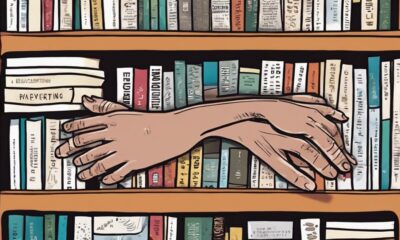
 Vetted22 hours ago
Vetted22 hours ago15 Best Co-Parenting Books Every Parent Should Read for Successful Co-Parenting
-

 Vetted6 days ago
Vetted6 days ago15 Best Books for Gentle Parenting Every Parent Should Read
















